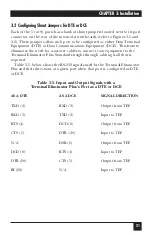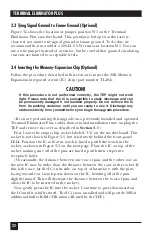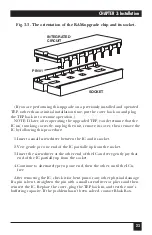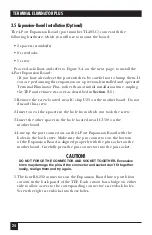
34
TERMINAL ELIMINATOR PLUS
Once the Terminal Eliminator Plus has been installed and configured, it
begins to operate continuously. This chapter details how the TEP works and
how you can control it with a combination of keyboard commands, the
initialization menu, and DIP switch settings.
5.1 The Master Device
The main function of the TEP is to gather data from various input (slave)
devices for display on a master device. The first thing you must see to is that
the TEP, your master device, and your slave devices are working together to
give you understandable output.
5.1.1 M
ASTER
-D
EVICE
T
YPES
A fairly simple terminal and keyboard can be used to configure the TEP.
Collecting, displaying, and recording your data might or might not require
more sophisticated equipment.
If your master-port device must be a display device like a terminal or printer
(and not a PC with a program collecting the data), then examine your data. If
the data contains no non-printable cursor-positioning control codes other
than carriage returns and line feeds, you can get a readable display by using a
“dumb” terminal or a “dumb” printer mode.
If your data contains cursor-positioning codes, however, you have two
choices. You can use a “dumb” master and set the TEP to strip the codes out
(refer to
Section 5.5.4.M
), if this produces readable results. But chances are
that the output will look much better if you can hook up a “smarter” master
device that can respond properly to these codes.
Things to remember if you’re using a “smarter” master device: To make
sure the TEP doesn’t alter the slaves’ data, you’ll have to disable all the TEP’s
formatting options, even the format-related DIP-switch options, when using
either of the Concentrate modes; also, you should use the Transparent
Conversation Mode when making a one-to-one link. Your slave devices must
also be able to respond to a command from the master to refresh the current
screen. This refresh will need to be done when the TEP’s master port’s output
changes to another slave port’s data.
5. Operation
















































